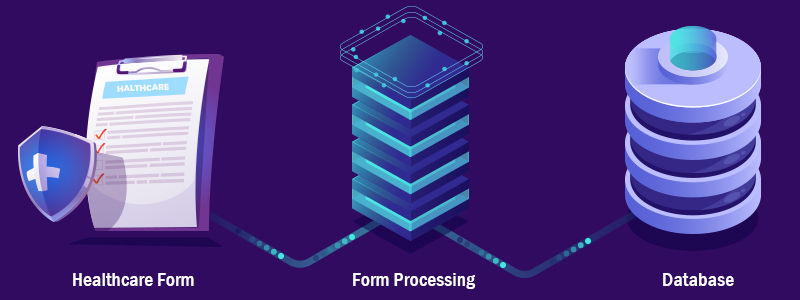The healthcare industry relies heavily on forms processing. However, password resets claims status requests, and other related issues are hampering the system. This is because forms processing in healthcare still relies heavily on paper-based workflows. The digitization of these processes has never been more important. Though it may seem like a daunting task to overhaul an entire system, it’s easier than you think. Here are some ways that you can improve your forms processing in healthcare to get up-to-speed with the digital age.
Why go digital?
In today’s digital age, there are many benefits to going digital with your healthcare forms processing. Here are a few of the most important ones:
- More Speed. No more waiting days for a reply from a patient. Doctors and nurses will be able to see the information they need immediately.
- Lower Cost.
- Improving data quality and reducing error rates lead to lowered costs.
- Reduce paper use by digitizing paper-based workflows, such as signing in patients with hospital ID cards or filling out paperwork with an iPad or tablet. This not only reduces your carbon footprint but also saves money on ink and paper.
- Improved Security. Use passwords and passcodes to keep your data safe from outsiders who may want access to it. Healthcare is an industry that prides itself on keeping private information private, so this is especially important in that field.
Best practices for digitizing forms processing in healthcare
There are several ways that you can improve your forms processing by making the switch to digital.
- Analyze existing paper processes: To start, look at your current workflow and identify any areas where paper is still necessary. Identify the reason for the need for paper; this will help you make more informed decisions on what processes should be digitized first.
- Create a project plan: Now that you know what needs to be digitized, it’s time to create a project plan. The project plan should include timelines and goals and may also require consulting with other teams in your organization.
- Bring in an expert: It may take some outside help to get your project off the ground, so don’t hesitate to bring in experts who can guide you through the process. Outsourcing experts will ensure that your organization stays on track and meets deadlines.
- Start simple: Don’t try to accomplish too much at once or else you’ll risk overwhelming yourself and others involved in the process. Instead, work on one area at a time and gradually add new features as you work through them to avoid confusion.
What to expect after digitizing the process
When you digitize your forms processing, you’ll be able to automate data entry. One of the biggest benefits of digitizing is being able to streamline your processes. You won’t have to rely on outdated systems that are difficult to use or manage.
You’ll also be able to eliminate most manual data entry errors. And with most processes being automated, you can drastically cut down on the time it takes for your staff to complete tasks.
This will also save space. With paper-based workflows, this requires a lot of physical space to store all the files and paperwork so they can be accessed later if needed. But with a digital workflow, you don’t have to maintain an archive of physical documents. You can keep everything accessible online and organized digitally!
With a digital workflow, there’s no need for scanning or faxing documents back and forth which saves you time and money! For example, if someone sends a prescription request from their doctor’s office, rather than printing it out and having them sign it, then sending it back via fax or mail – which would require more labor from clerical staff – it could just be scanned into the system digitally without any human interaction required at
Tips for becoming a digital form processor
Digitizing paper-based processes is a huge undertaking. It can be hard to know where to start, but it’s worth it in the long run. Below are some of the most important steps for getting your business up-to-speed with the digital age:
Start small
Your goal should be to digitize one process at a time. If you try to do everything at once, you’ll get overwhelmed and end up making no progress.
Gather input
Talking to your employees is paramount when trying to digitize your processes. They will have a wealth of knowledge about how things work in your company and what needs improving.
Look for automation opportunities
Investigate software that could automate or streamline aspects of your workflow that are already digitized. For example, if you have a form that asks patients for their contact information, there might be an app on your phone that would allow them to type it in instead of filling out the form by hand.
Conclusion
The digitization of forms processing in healthcare is a trend that will only continue to grow in the coming years. With the passage of the American Health Care Act, more and more hospitals and healthcare providers will be required to digitize their forms processing. Whether you’re a small clinic looking to save time and money on administrative tasks or a large hospital looking to cut costs and improve efficiency, there are many benefits to digitizing your forms processing.
To learn more about healthcare forms processing, reach out to DeepDatum and explore how the AI-powered D2 platform can help with your digitization projects.


Leave A Comment